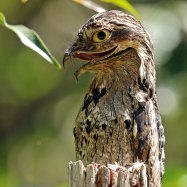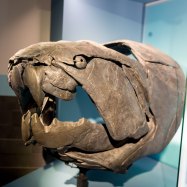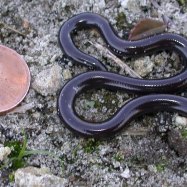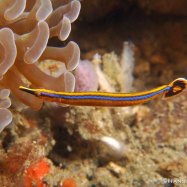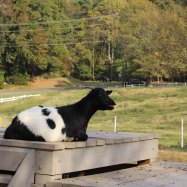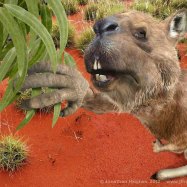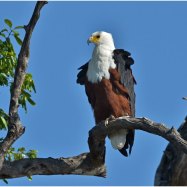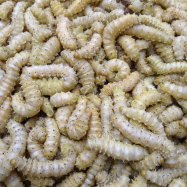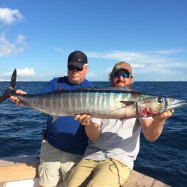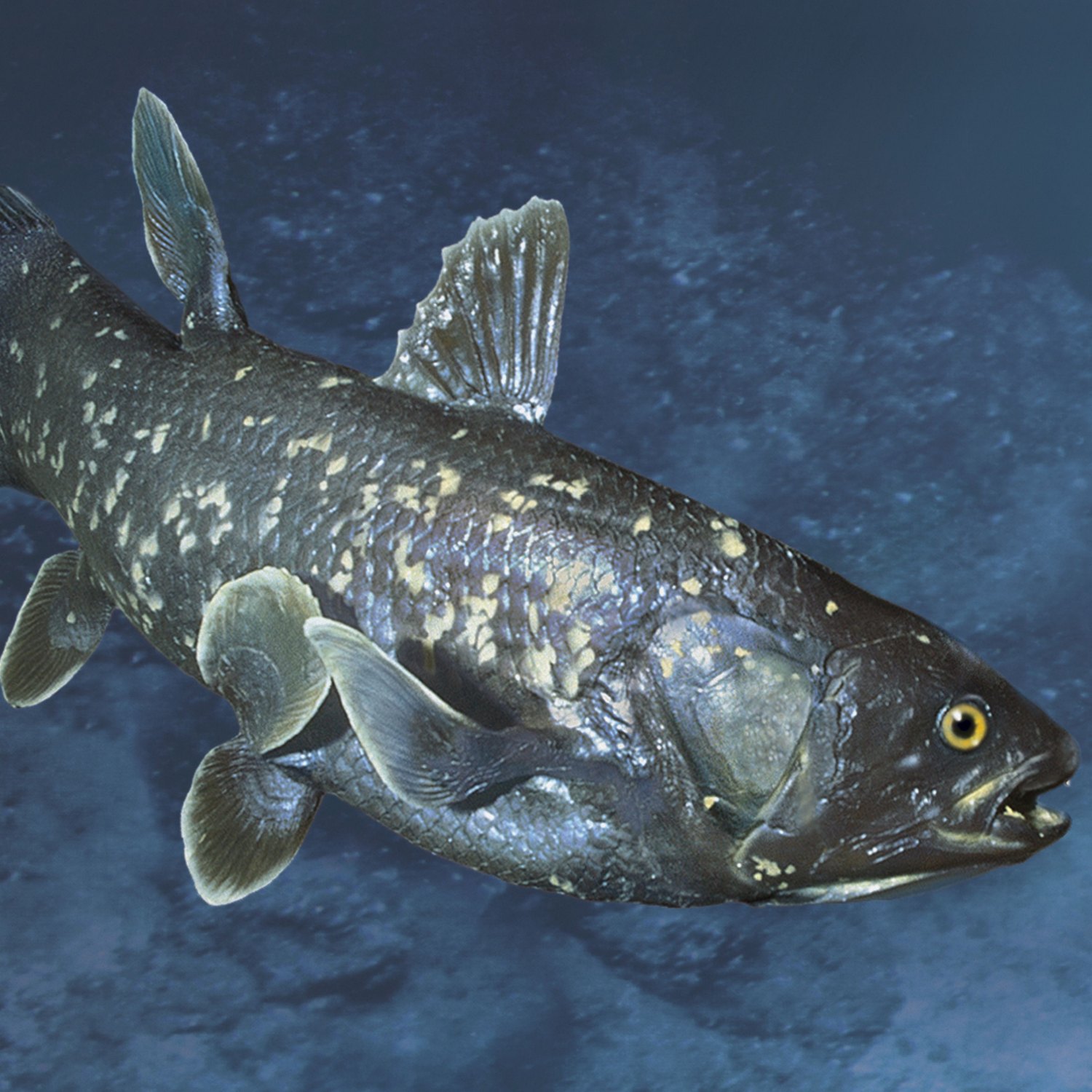
Coelacanth
1.5 - 2 meters
The Coelacanth, a rare prehistoric fish, is a mysterious creature that can reach lengths of up to 2 meters. It is found in deep-sea caves and crevices, and belongs to the Latimeriidae family. Despite its fish-like appearance, it is actually a close relative of land-dwelling animals. Its unique biology and evolution make it a fascinating subject for scientists and nature enthusiasts alike. #Coelacanth #fish #deepsea #Latimeriidae
Animal Details Summary:
Common Name: Coelacanth
Kingdom: Animalia
Habitat: Marine
The Coelacanth: A Mysterious Creature from the Depths of the Indian Ocean
The depths of the Indian Ocean hold many secrets, and none more intriguing than the Coelacanth (Latimeria chalumnae). This enigmatic creature, also known as the "living fossil" or "old four-legged fish," has long fascinated scientists and captured the imagination of the world. Despite being discovered in 1938, there is still a sense of mystery surrounding this ancient fish, making it one of the most intriguing and studied creatures in the world.Uncovering the Coelacanth
The Coelacanth belongs to the kingdom Animalia, making it a living organism with distinct characteristics and organs Coelacanth. It falls under the phylum Chordata, which includes all organisms with a spinal cord, and the class Sarcopterygii, which encompasses all bony fish with limb-like fins. Within this class, the Coelacanth belongs to the order Coelacanthiformes and the family Latimeriidae.At a first glance, the Coelacanth may seem like any other fish, but a closer look reveals its unique features. Its body is shaped like a fish, with a long, streamlined body, and is known to reach lengths of 1.5 to 2 meters. However, what sets it apart is its remarkable blue-gray coloration, giving it an otherworldly appearance.
Discovering the Coelacanth
The story of the Coelacanth begins in 1938 off the coast of South Africa. Marjorie Courtenay-Latimer, a museum curator, received a strange donation from a local fisherman. Upon inspection, she recognized it as a type of fish that was believed to have gone extinct millions of years ago Carolina Parakeet. She contacted renowned scientist J.L.B. Smith, who confirmed that it was, in fact, a Coelacanth.This discovery caused a sensation in the scientific community, as it was believed that Coelacanths disappeared during the Cretaceous period, over 65 million years ago. It was even coined as a "living fossil" due to its resemblance to its ancient ancestors. Since then, several more Coelacanths have been discovered in the Indian Ocean, shedding light on its unique characteristics and behavior.
A Creature of the Deep
The Coelacanth's natural habitat is the deep-sea caves and crevices of the Indian Ocean, and it is rarely seen in the wild. This elusive creature is known to live at depths of over 200 meters, making it difficult to study and observe in its natural environment.One of the most distinctive features of the Coelacanth is its ability to breathe air. It has a specialized lung-like organ called a "swim bladder," which allows it to rise to the surface and absorb oxygen. This is believed to be an evolutionary adaptation, allowing it to survive and thrive in the oxygen-deprived deep waters. The Coelacanth also has a unique spine structure, which allows it to absorb the pressure of the deep-sea without collapsing.
A Carnivorous Lifestyle
As a carnivorous animal, the Coelacanth feeds on various marine creatures, including hagfish, squid, and crustaceans. Its diet is heavily dependent on its location and availability of food in its deep-sea habitat. Due to its scarce presence in the wild, little is known about its feeding habits, making it an area of study for researchers.Despite its size, the Coelacanth is a slow-moving and docile creature, making it an easy target for predators. It is believed that its blue-gray coloration helps it camouflage in the dark depths of the ocean, making it less visible to potential predators.
The Future of the Coelacanth
Since its discovery, the Coelacanth has been studied by scientists globally, with many efforts aimed towards its protection and preservation. It is currently listed as a critically endangered species on the International Union for Conservation of Nature (IUCN) Red List. Not only is it facing threats from overfishing and habitat destruction, but its slow reproductive rate and late maturity also make it vulnerable to extinction.The Coelacanth's unique genetic makeup also holds promising scientific potential. Its ability to absorb high levels of carbon dioxide in its blood and its primitive traits have sparked interest in further studies, potentially leading to advancements in medical research and evolution studies.
A Symbol of Resilience
The Coelacanth's existence today is a testament to its resilience and ability to adapt to its environment over millions of years. Its discovery was a groundbreaking moment in scientific history, redefining our understanding of evolutionary biology. The ongoing research and conservation efforts are crucial in preserving this ancient and mysterious creature, allowing future generations to continue to marvel at its existence.The Coelacanth continues to be a symbol of resilience, reminding us of the boundless wonders the natural world holds. Its unique characteristics and enigmatic nature will continue to captivate scientists and nature enthusiasts, making it a valuable and cherished part of our planet's biodiversity.

Coelacanth
Animal Details Coelacanth - Scientific Name: Latimeria chalumnae
- Category: Animals C
- Scientific Name: Latimeria chalumnae
- Common Name: Coelacanth
- Kingdom: Animalia
- Phylum: Chordata
- Class: Sarcopterygii
- Order: Coelacanthiformes
- Family: Latimeriidae
- Habitat: Marine
- Feeding Method: Carnivorous
- Geographical Distribution: Indian Ocean
- Country of Origin: South Africa
- Location: Deep-sea caves and crevices
- Animal Coloration: Blue-gray
- Body Shape: Fish-like
- Length: 1.5 - 2 meters
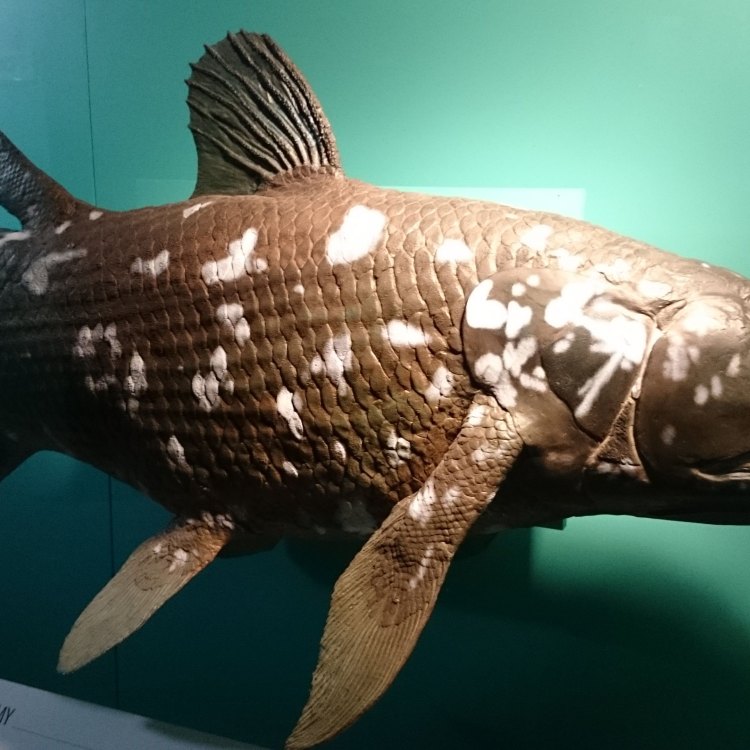
Coelacanth
- Adult Size: Large
- Average Lifespan: Unknown (estimated to be around 60 years)
- Reproduction: Ovoviviparous
- Reproductive Behavior: Internal fertilization
- Sound or Call: Unknown
- Migration Pattern: Unknown
- Social Groups: Solitary
- Behavior: Nocturnal
- Threats: None (not targeted by fishing industry)
- Conservation Status: Endangered
- Impact on Ecosystem: Unknown
- Human Use: None
- Distinctive Features: Lobed fins, unique tooth structure
- Interesting Facts: Coelacanths are sometimes referred to as 'living fossils' as they are believed to be one of the oldest living species on Earth.
- Predator: Unknown
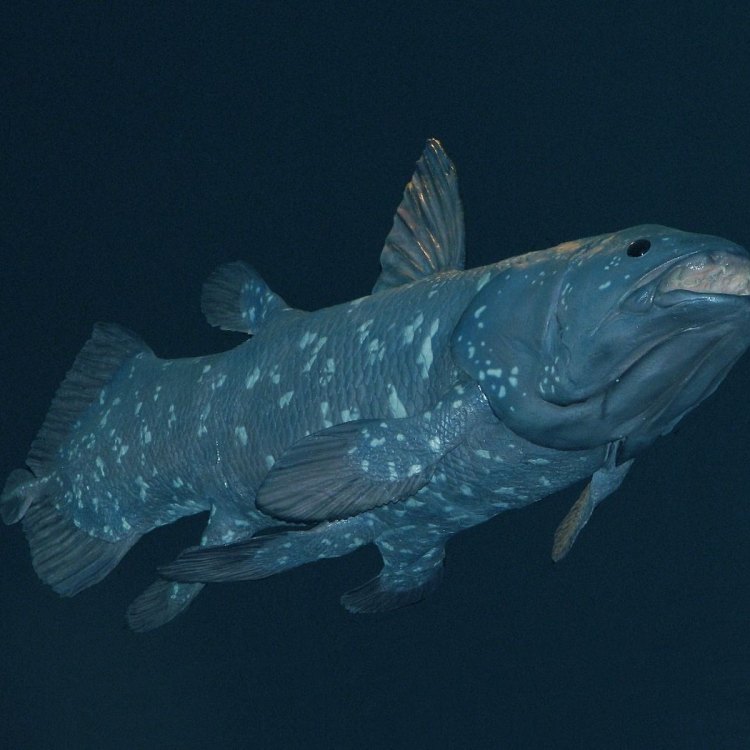
Latimeria chalumnae
The Coelacanth: A Mysterious and Endangered "Living Fossil
In the depths of the ocean, 250-800 meters below the surface, dwells an ancient and elusive creature – the Coelacanth. This fascinating fish has captured the imagination of scientists and the public alike with its history, behavior, and unique features. Despite being around for millions of years, the Coelacanth still remains a mysterious and enigmatic species. In this article, we will delve into the world of the Coelacanth, exploring its distinctive features, behavior, and its impact on the ecosystem PeaceOfAnimals.Com.Adult Size and Average Lifespan
One of the most striking things about the Coelacanth is its size. It is a large fish, reaching lengths of up to 2 meters and weighing up to 90 kilograms. This size puts it on par with some sharks and other deep-sea creatures. However, its size is not the only thing that makes it unique.
The average lifespan of the Coelacanth is still unknown, but researchers estimate it to be around 60 years. This is an impressive lifespan, considering the challenges of living in the deep ocean.
Reproduction and Reproductive Behavior
Coelacanths are ovoviviparous, meaning they give birth to live young. However, unlike most live-bearing fish, the Coelacanth's embryos develop within eggs inside the mother's body. The gestation period is believed to be around two years, making it one of the longest in the animal kingdom Costas Hummingbird.
The Coelacanth also has an interesting reproductive behavior – internal fertilization. This means that the male's reproductive organs are inserted into the female's body to fertilize the eggs. This behavior is believed to have evolved to increase the chances of successful reproduction in the deep ocean where finding a mate can be challenging.
Sound or Call and Migration Pattern
While little is known about the Coelacanth's sound or call, it is believed that they may use vocalizations to communicate with each other in the dark depths of the ocean. As for their migration patterns, this is still unknown. The Coelacanth is a notoriously difficult species to study due to its deep-sea habitat and mysterious behavior.
Social Groups and Behavior
The Coelacanth is a solitary creature, meaning that it prefers to live and hunt alone. However, they have been observed in small groups, possibly during mating season or when searching for food. Their behavior is also a mystery, mainly due to the lack of opportunities to study them in their natural habitat. However, it is known that they are nocturnal, meaning they are most active at night.
Threats, Conservation Status, and Impact on Ecosystem
Unlike many other marine species, the Coelacanth is not threatened by the fishing industry. This is mainly due to the depths at which it lives, making it impractical and nearly impossible to fish. However, their deep-sea habitat has not protected them from other human-induced threats such as pollution and climate change.
The Coelacanth is currently listed as Endangered on the IUCN Red List of Threatened Species. This is due to its limited distribution, low reproductive rate, and vulnerability to human-induced threats. Despite their long lifespan, Coelacanths have a slow reproductive rate, making it challenging for the species to recover from declining populations.
The impact of the Coelacanth on the ecosystem is still unknown. They primarily feed on smaller fish and crustaceans, but their exact role in the food chain is still a mystery. Some scientists speculate that they may play a vital role in maintaining the balance of deep-sea ecosystems due to their presence in the food web for millions of years.
Human Use and Distinctive Features
The Coelacanth has no known use for humans, making it one of the few marine species that has not been targeted by the fishing industry. However, they are often caught inadvertently as bycatch in deep-sea fishing operations. Some countries have also banned the sale and export of Coelacanth specimens, as they are considered a valuable and rare species.
One of the Coelacanth's most distinctive features is its unique tooth structure. Unlike most fish, the Coelacanth's teeth are not embedded in the jaw but are instead attached to the roof of its mouth. This adaptation allows them to crush hard-shelled prey with ease.
Interesting Facts and Predators
The Coelacanth is often referred to as a "living fossil" due to its ancient ancestry and evolutionary history. It is believed to have been around for over 400 million years, making it one of the oldest living species on Earth. Its discovery in the 1930s was a groundbreaking moment in the scientific community and stirred up debates about the evolution of fish and other vertebrates.
Despite their large size, the Coelacanth has no known predators. Their deep-sea habitat and unique features may have helped them avoid being preyed upon for millions of years. However, the exact predators of the Coelacanth are still unknown.
Final Thoughts
In conclusion, the Coelacanth has captivated scientists and the public with its mysterious behavior, unique features, and ancient history. Its role in the ecosystem and potential impact on the food chain is still a mystery, making it a species worth studying and protecting. As we continue to explore the depths of the ocean, we may uncover more information about this elusive and endangered "living fossil".
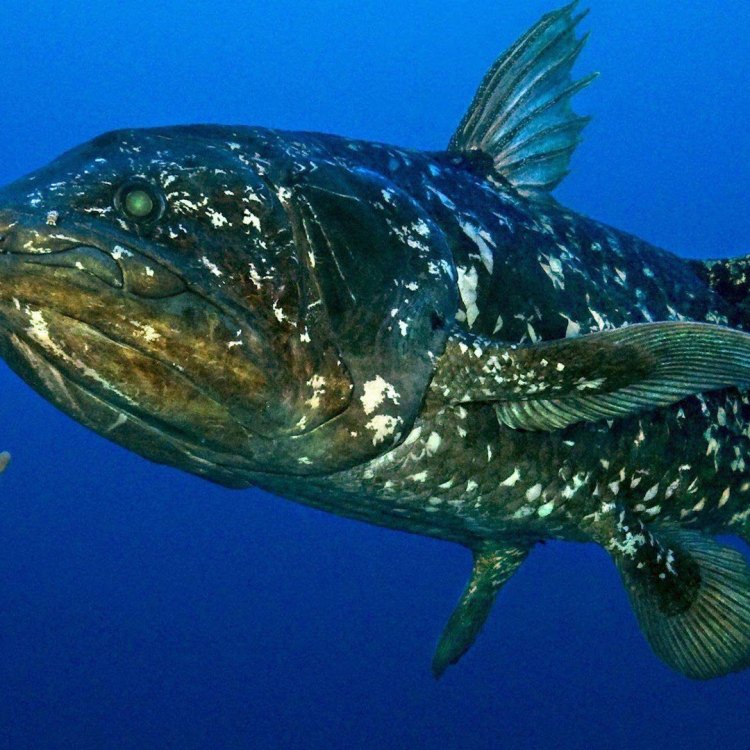
The Coelacanth: A Mysterious Creature from the Depths of the Indian Ocean
Disclaimer: The content provided is for informational purposes only. We cannot guarantee the accuracy of the information on this page 100%. All information provided here may change without prior notice.


